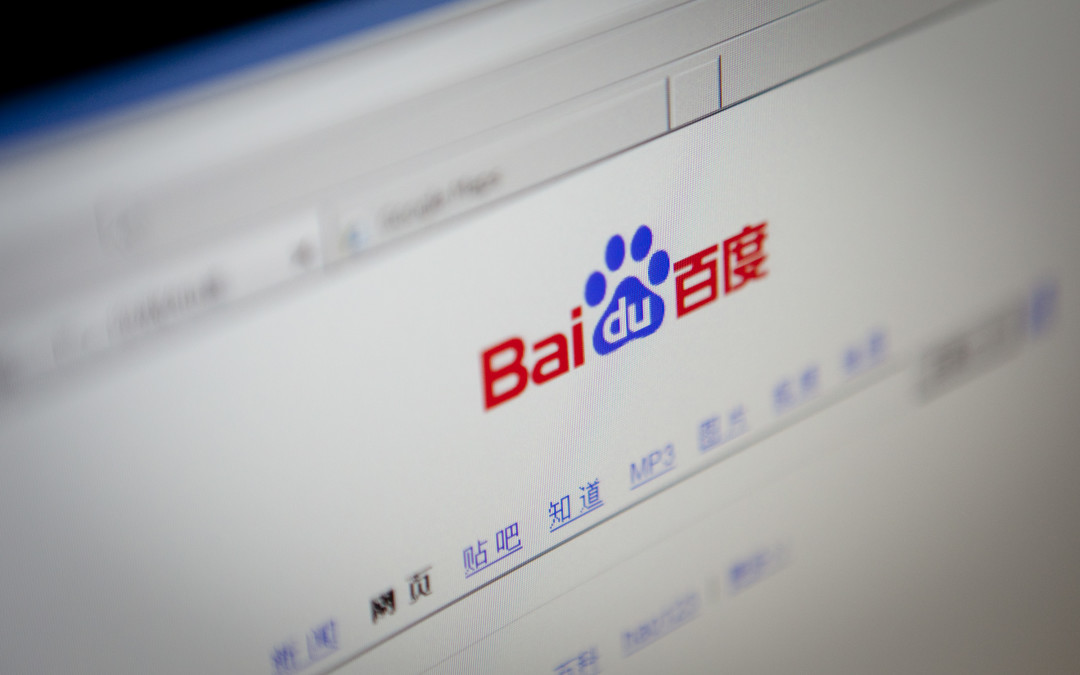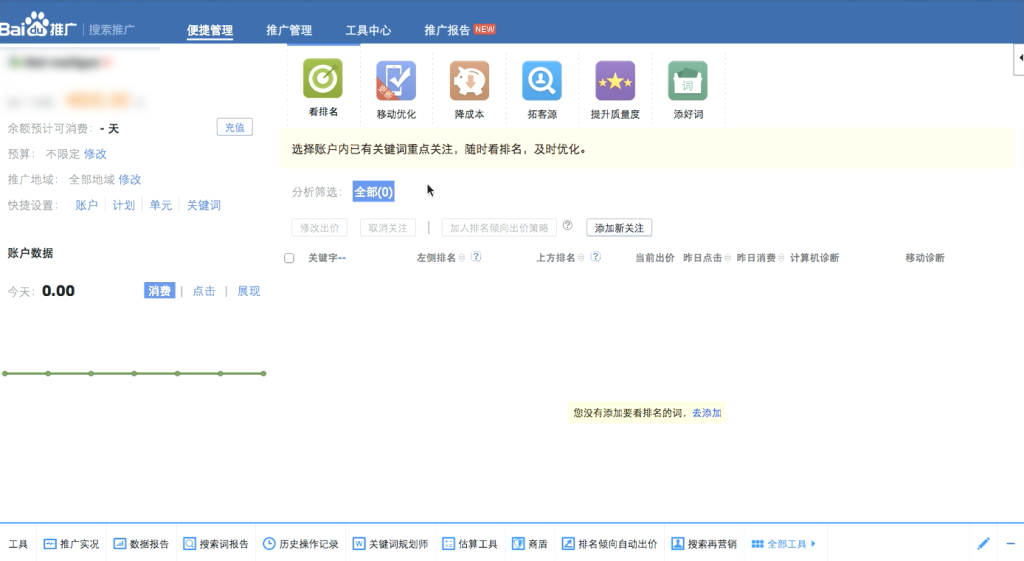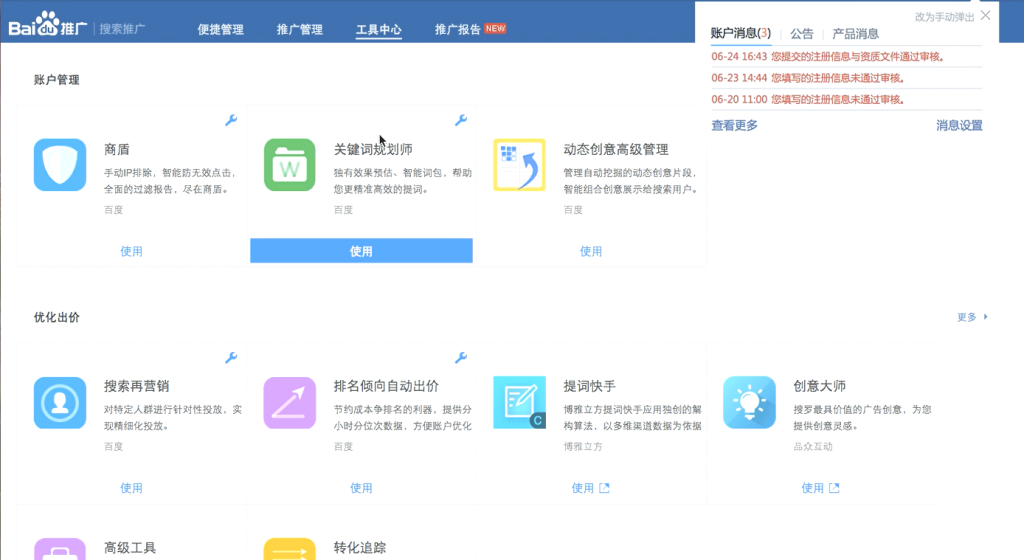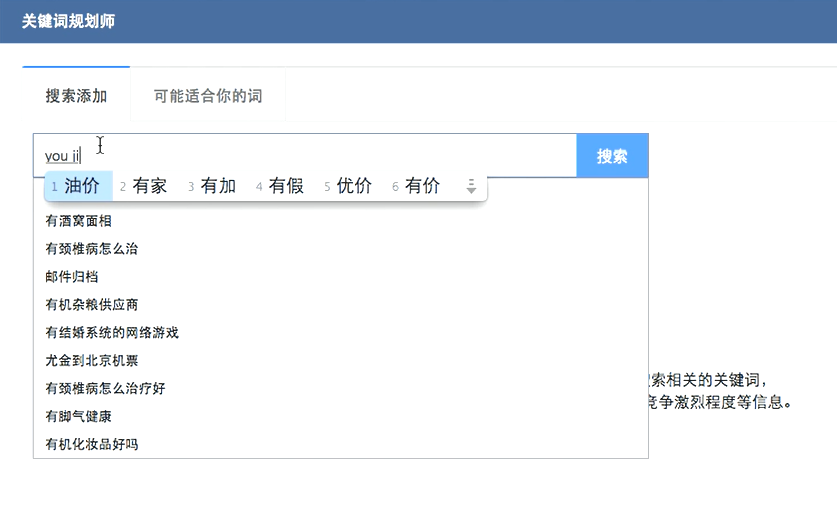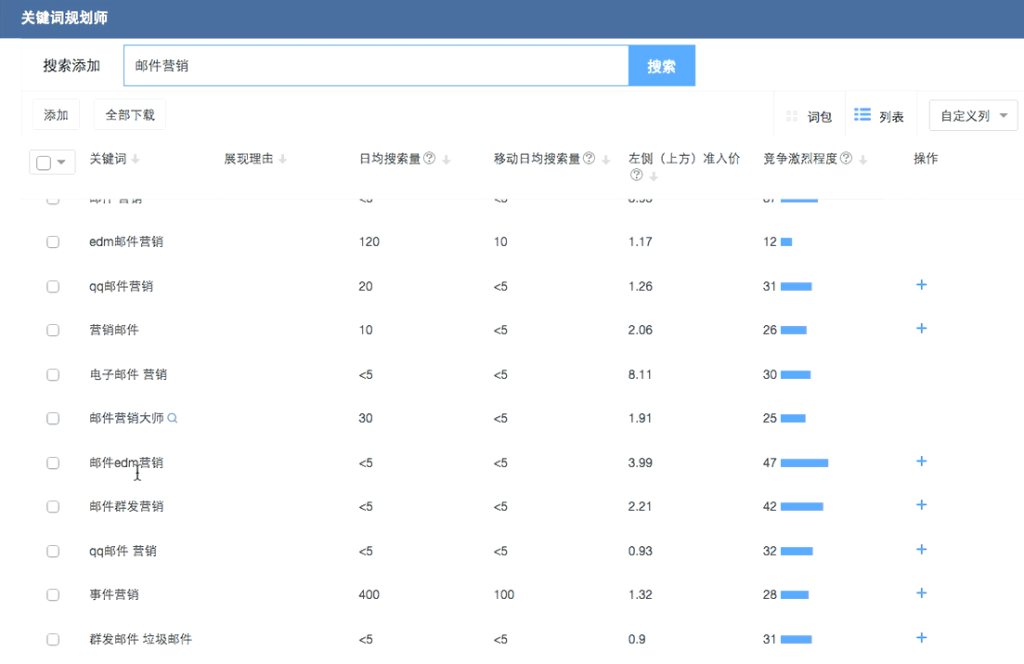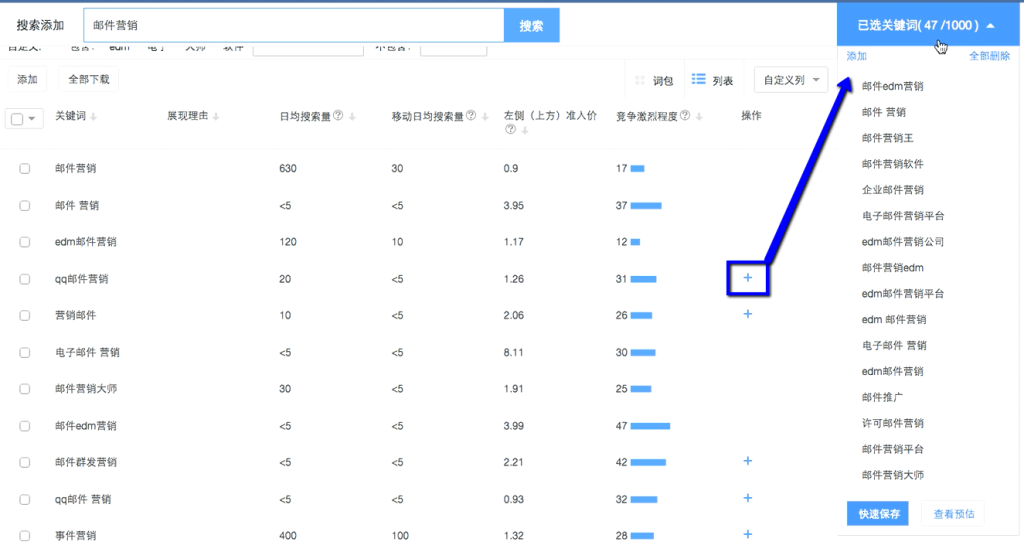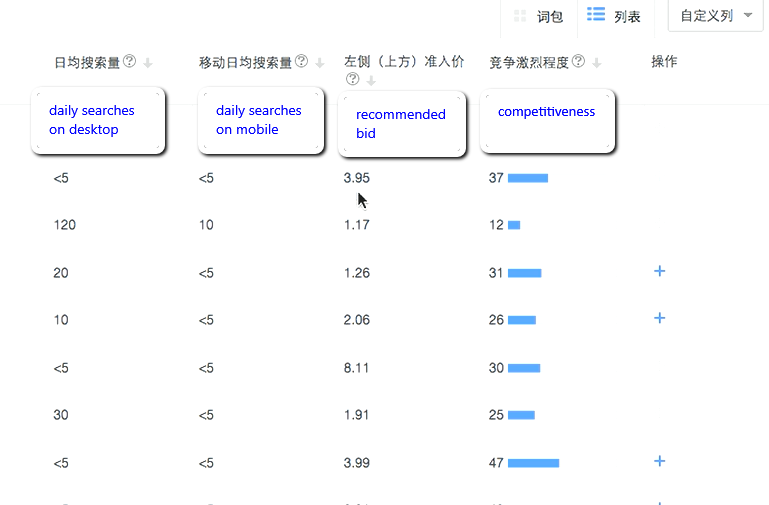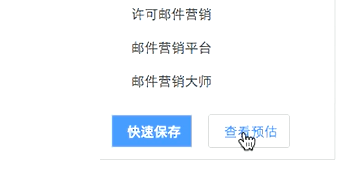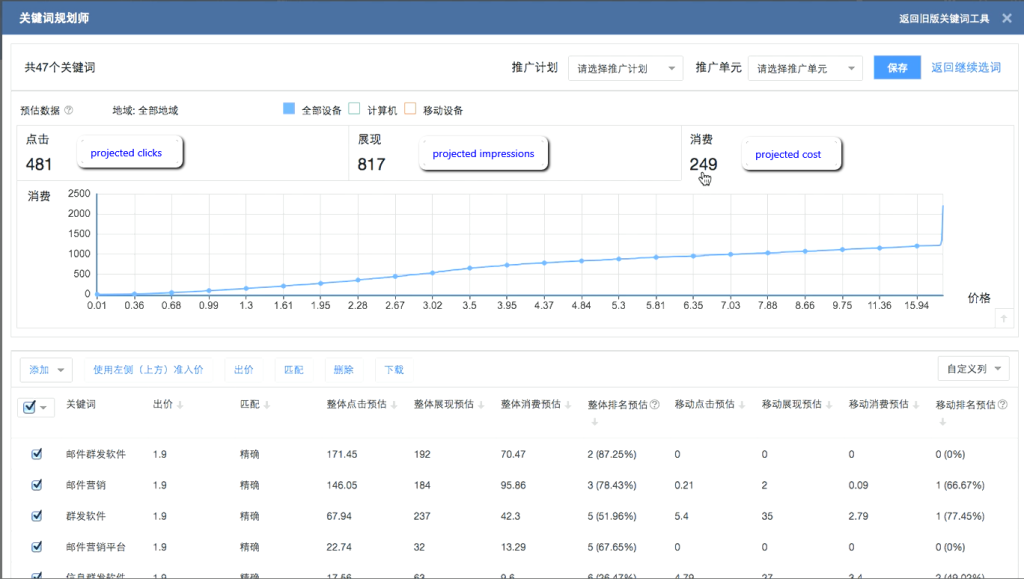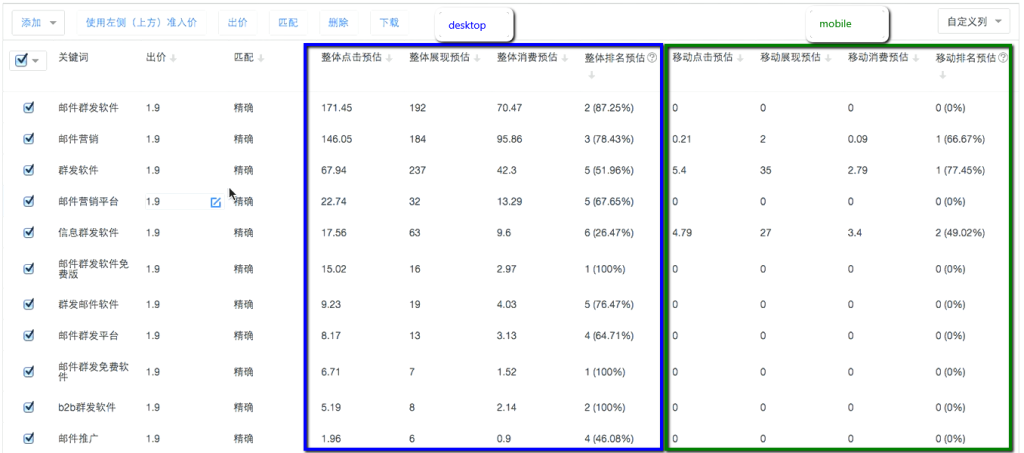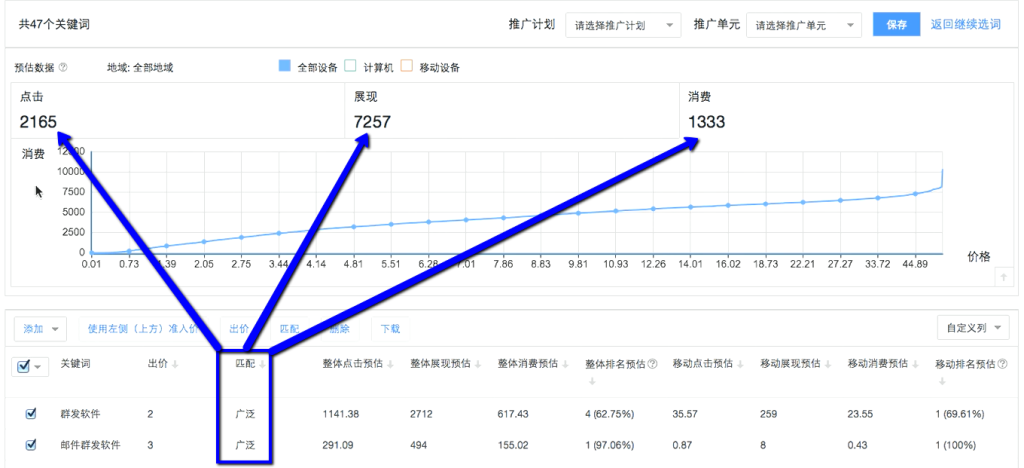With Google’s fading into total irrelevance in China, Baidu remains the primary search engines for millions of Chinese. This makes Baidu PPC the first choice for any business considering SEM in China.
Although, it has some formidable local competitors like QiHu and Sogou, Baidu still holds the largest markets share in search engines. Baidu also dominates the increasingly important mobile search market.
Although advertising on Baidu is similar to Google in concept, there are some major differences. Here is the first part of our Baidu PPC account tutorial.
Once you have your Baidu account application processed, approved and verified, you will be granted access to the back-end. This will enable you to start setting up campaigns, design ads, research keywords and use other Baidu tools that are available.
The process of opening Baidu account will be covered in another post, here we will focus on how Baidu PPC works from the back-end.
Baidu PPC main account settings
Here is how Baidu PPC account would look like upon login:
It is, so called, Baidu quick management panel which gives a quick overview of the ongoing campaigns, the account details and the balance. It also gives s quick access to Baidu PPC tools. Now, we are going to review one of those tools – Baidu keyword planner.Keyword research is the foundation of any PPC campaign and Baidu provides a keyword research tool which is similar in concept to Google adwords planner.
It can be accessed from the tools menu of the quick management panel:
While searching for keywords, the tool would make some relevant suggestions as you type:
Just like with Google adwords planner, Baidu PPC keyword tool displays various data on the selected keywords and allows sorting them out by criteria:Clicking on the plus sign in the right column will add the keyword to user’s list:
For each of the keywords in the list, Baidu PPC keyword tool would separately display the number of daily searches on desktop and mobile. It also shows the recommended bid and competitiveness ranking:
Once the initial list is generated, next step is to review it by various performance criteria. Click on the right button at the bottom of the list:
This will open up the a detailed view of the Baidu PPC keywords data and projected campaign performance and cost:
Baidu keyword review panel also provides a convenient way to see each keyword’s performance on either desktop or mobile separately:
From this point, it is easy make adjustments to various parameters and see how they would affect the performance in terms of impressions, click-through rate (CTR) and projected cost.
For example, here is how to change the bid across all of the keywords to see the effect:
This menu allows adjusting keyword matching criteria from broad, narrow and exact match:
For example, setting up keyword matching method to “broad” would immediately increase number of impressions and consequently the CTR. The graph will be recalculated to reflect the new PPC campaign cost projection:
Stay tuned to the next part of Baidu PPC tutorial where we will show how to setup a campaign based on specific keyword set.

